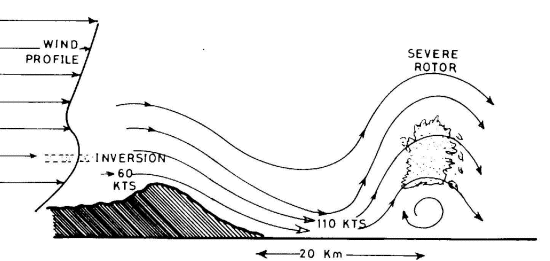Rotor Clouds
Rotor clouds form at lowest levels and are a form of lee eddy. The air in the cloud rotates around an axis parallel to the mountain range. These clouds are associated with severe turbulence and strong vertical motions. At the bottom of the rotor cloud the wind direction is opposite to the gradient wind. Rotor clouds, filmed in fast motion, show a kind of "waterfall" effect (see the video below). Rotor clouds belong to the group of lenticularis clouds.
Figure 4: Rotor clouds over the Colorado Front Range. Credits Steve Zimmermann
Updrafts and downdrafts on both sides of the rotor cloud can exhibit wind speeds comparable to the background flow. The heaviest turbulence usually occurs near the first rotor cloud after the mountain crest. The height of the rotor cloud can exceed the mountain top by more than 1000 meters. Observations show that turbulence is more severe when the first rotor cloud forms further downstream of the mountain crest.
Figure 5: Schematic of a rotor cloud (WMO, 1978)
